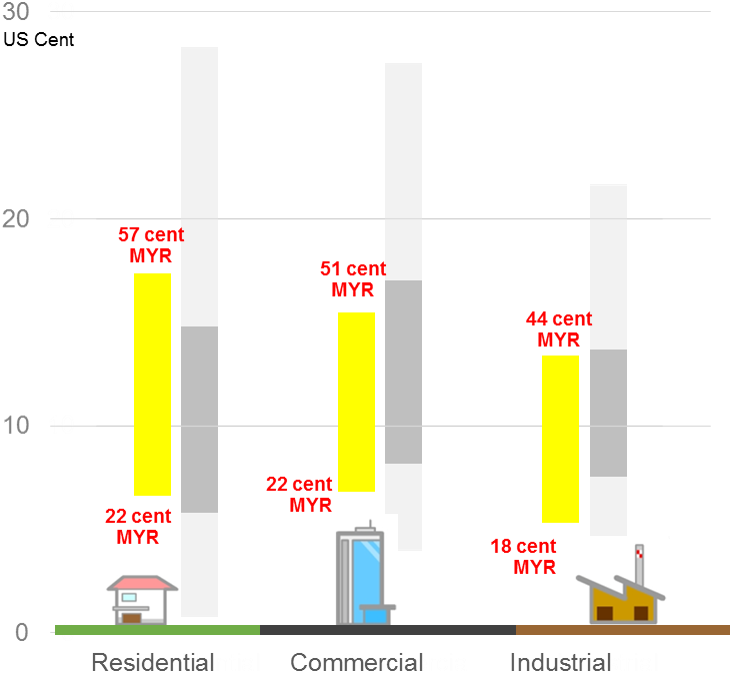Malaysia has significant fossil fuel resources. The National Petroleum Policy, which was the very first energy policy introduced in the country, focuses exclusively on the petroleum sector. The National Energy Policy was established in 1979 and it outlines three primary objectives: energy supply, energy utilization and environmental issues. The supply objectives are to ensure security of energy supply, to introduce renewable energy technologies, and to diversify supply of energy. The utilization objectives focus on improvement of energy efficiency at end-users. The environmental objectives aim to use renewable energy sources in order to minimize adverse effects of energy sector on the environment.
There are several major stakeholders involved in Malaysia’s energy policy. The Economic Planning Unit (EPU) of Prime Minister’s Department focuses on petroleum energy and privatization of electricity supply. Ministry of Energy, Green Technology, and Water (MESTECC)[1]; is responsible for supply of electricity, energy efficiency, and renewable energy, while Ministry of Rural Development works on rural electrification. The Energy Commission (EC) is a regulatory body in the power and natural gas industry.
The Renewable Energy Act (Act 725) was introduced in 2011 to set the framework for the Feed-in Tariff (FiT) and the RE grid integration. The Sustainable Energy Development Authority Malaysia (SEDA) was the implementing institution of this act. It defines the rules for: the eligibility criteria for feed in tariffs, conditions for renewable energy power purchase agreements, technical and operational requirements as well as payment, duration and regression of the tariffs, etc.
Since 2010, the Malaysian Government has introduced the Green Technology Financing Scheme (GTFS), administered by GreenTech Malaysia to fund green technology related ventures providing easier access to financing from the market. The Scheme was initially set to last through 2015 and was extended first through 2017 and again through 2022. These extensions reflect the Government’s commitment to pursuing the development of the green technology sector for the nation’s socio-economic growth. The loan guarantee scheme offers a rebate of 2% per annum on interest or profit rates charged by financial institutions while also providing a Government guarantee of 60% for the green cost of the financed amount. The GTFS extension through 2022 includes an addition of MYR 5 billion (USD 1.2 billion) loans that may be approved through the scheme. On top of that, the MYR 3.5 billion (USD 814 million) has already been previously approved.
[1] MESTECC: Ministry of Energy, Science, Technology, Environment & Climate Change (MESTECC)
 Source: Electric Utility Company (Tenaga Nasional Berhad – TNB) (March 2014)
Source: Electric Utility Company (Tenaga Nasional Berhad – TNB) (March 2014)